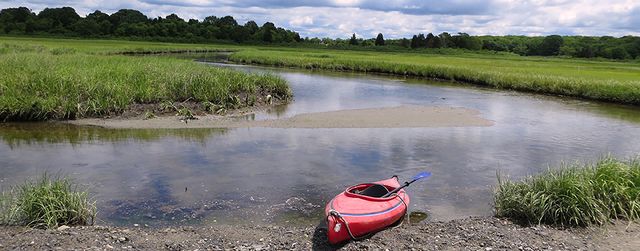Glossary:Salt marsh: Difference between revisions
No edit summary |
No edit summary |
||
| (One intermediate revision by the same user not shown) | |||
| Line 6: | Line 6: | ||
|Sentence=Salt marshes protect shorelines from erosion by buffering wave action and trapping sediments. | |Sentence=Salt marshes protect shorelines from erosion by buffering wave action and trapping sediments. | ||
|RelatedURL=https://oceanservice.noaa.gov/facts/saltmarsh.html | |RelatedURL=https://oceanservice.noaa.gov/facts/saltmarsh.html | ||
|ImageFile=Saltmarsh.jpg | |||
|Poster=Admin | |Poster=Admin | ||
|Postdate=20191110212407 | |Postdate=20191110212407 | ||
| Line 22: | Line 23: | ||
Salt marshes also protect shorelines from erosion by buffering wave action and trapping sediments. They reduce flooding by slowing and absorbing rainwater and protect water quality by filtering runoff, and by metabolizing excess nutrients. | Salt marshes also protect shorelines from erosion by buffering wave action and trapping sediments. They reduce flooding by slowing and absorbing rainwater and protect water quality by filtering runoff, and by metabolizing excess nutrients. | ||
Source: https://oceanservice.noaa.gov/facts/saltmarsh.html | |||
</div> | </div> | ||
Latest revision as of 08:10, July 14, 2024
What is a salt marsh?
Salt marshes are coastal wetlands that are flooded and drained by salt water brought in by the tides. They are marshy because the soil may be composed of deep mud and peat. Peat is made of decomposing plant matter that is often several feet thick. Peat is waterlogged, root-filled, and very spongy. Because salt marshes are frequently submerged by the tides and contain a lot of decomposing plant material, oxygen levels in the peat can be extremely low—a condition called hypoxia. Hypoxia is caused by the growth of bacteria which produce the sulfurous rotten-egg smell that is often associated with marshes and mud flats.
Salt marshes occur worldwide, particularly in middle to high latitudes. Thriving along protected shorelines, they are a common habitat in estuaries. In the U.S., salt marshes can be found on every coast. Approximately half of the nation's salt marshes are located along the Gulf Coast.
These intertidal habitats are essential for healthy fisheries, coastlines, and communities—and they are an integral part of our economy and culture. They also provide essential food, refuge, or nursery habitat for more than 75 percent of fisheries species, including shrimp, blue crab, and many finfish.
Salt marshes also protect shorelines from erosion by buffering wave action and trapping sediments. They reduce flooding by slowing and absorbing rainwater and protect water quality by filtering runoff, and by metabolizing excess nutrients.

